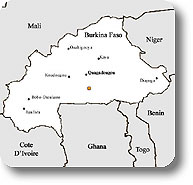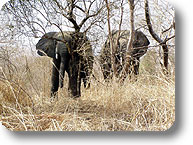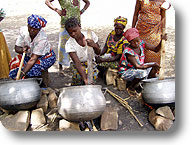
 |
Kabore Tambi National Park |
Protected Area |
||||||||
 |
|
|||||||
The Park |
||||||||
 |
Kaboré Tambi National Park is one of the two National Parks in Burkina Faso. The importance of its biodiversity and the specific nature of its ecosystem make it an important nature reserve in the heart of West Africa. Situated at 115 km in the south of Ouagadougou, it covers an area of 155,500 ha. The first establishment decree dates back to 1936, but the current classification measure transforming it into a National Park dates back to 1986. Paradoxically, after its establishment this Park suffered many attacks by man, and therefore requires today urgent conservation strategies. This situation led the Foundation NATURAMA (an African NGO) to include in 1993 the conservation of this Park in its environment conservation national program. In 1997 the Ministry of the Environment entrusted NATURAMA with the management of the Park for 10 renewable years, with the task to involve the surrounding villages in the enhancement of the scientific, educational, recreational, and economic areas. This decision by the Ministry is the consequence of the current governmental policies aiming at improving environmental safeguard by making responsible local communities. This Park is important:
The Park flora mainly consists of species coming from Sudan and Zambia which adapted to the sub-Sahelian climate characterized by only one rainy season. 212 species have been registered in the various kinds of savannah. The fauna consists of antelopes, elephants, monkeys, jackals, mongooses, genets, hyenas, warthog, etc. and of a considerable number of birds, reptiles (i.e. crocodile and monitor), and fish. |
|||||||
The Collaboration with Orsiera Rocciavrè Nature Park |
||||||||
 |
NATURAMA has proved to be interested in starting exchanges with the Parks of Piedmont, to begin future collaboration activities. In particular, in 2005 the collaboration with Orsiera Rocciavrè Nature Park began:
|
|||||||
|
Some moments of work in the Park:
|